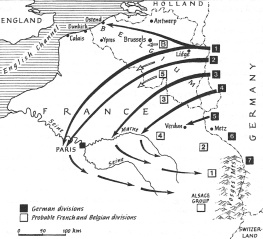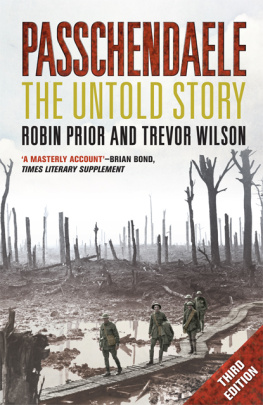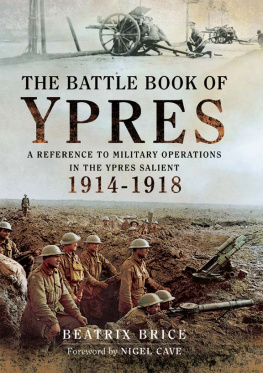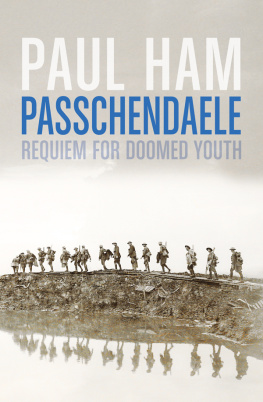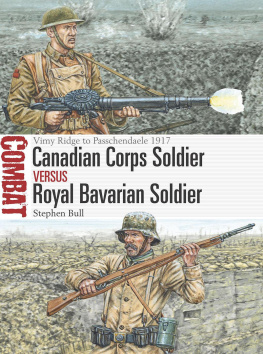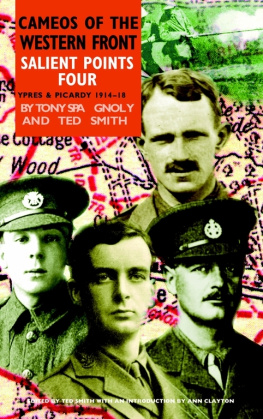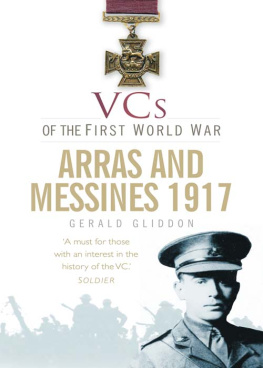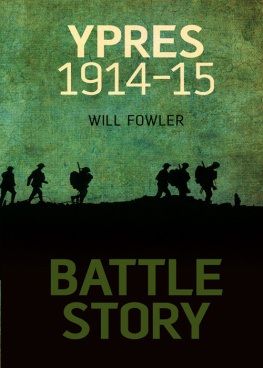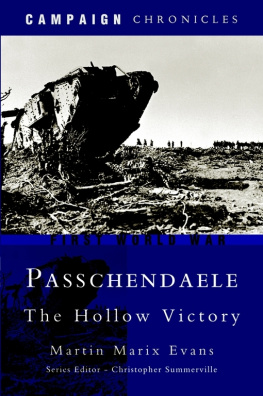Contents
Page List
Guide

ABOUT THIS BOOK
The Ypres salient was the favourite battle ground of the devil and his minions, wrote one returned serviceman after the First World War. Few who fought in the infamous third battle of Ypres now known as Passchendaele in 1917 would have disagreed. All five of the Australian Imperial Forces (AIF) infantry divisions were engaged in this bloody campaign. Despite early successes, their attacks floundered in front of the devastated Belgian village of Passchendaele when autumn rains drenched the battlefield, turning it into an immense quagmire. By the time the AIF withdrew, it had suffered more than 38,000 casualties, including 10,000 dead, far outweighing Australian losses in any other Great War campaign.
Given the extent of their sacrifices, the Australians exploits in Belgium ought to be well known in a nation that has fervently commemorated its involvement in the First World War. Yet Passchendaele occupies an ambiguous place in Australian collective memory. Tracing the commemorative work of official and non-official agents including that of C.E.W. Bean; the Australian War Memorial; returned soldiers; battlefield pilgrims; and, more recently, the Department of Veterans Affairs, working in collaboration with Belgian locals The Battlefield of Imperishable Memory explores why these battles became, and still remain, peripheral to the dominant First World War narrative in Australia: the Anzac legend.
The Battlefield of Imperishable Memory: Passchendaele and the Anzac Legend
Copyright 2021 Matthew Haultain-Gall
All rights reserved. Apart from any uses permitted by Australias Copyright Act 1968, no part of this book may be reproduced by any process without prior written permission from the copyright owners. Inquiries should be directed to the publisher.
Monash University Publishing
Matheson Library Annexe
40 Exhibition Walk
Monash University
Clayton, Victoria 3800, Australia
publishing.monash.edu
Monash University Publishing brings to the world publications which advance the best traditions of humane and enlightened thought.
This book has been peer reviewed.
ISBN: 9781922464064 (paperback)
ISBN: 9781922464071 (PDF)
ISBN: 9781922464088 (epub)
Design: Les Thomas
Typesetting: Jo Mullins
Cover image: Photograph of three unidentified soldiers looking at the corduroy track leading from Westhoek Ridge to Bellevarde Ridge. (Unknown Australian official photographer, 26 October 1917. Australian War Memorial, E01318.)
A catalogue record for this book is available from the National Library of Australia
CONTENTS
LIST OF PLATES
ABOUT THE AUTHOR
Matthew Haultain-Gall is a scientific collaborator at the Universit catholique de Louvain, Belgium. His research focuses on the cultural and social impacts of the First World War. In 2017 he completed a PhD at the University of New South Wales, Australia, in which he traced how Australians have remembered and commemorated the battle of Messines and the third battle of Ypres.
ACKNOWLEDGEMENTS
Beginning as a doctoral thesis, this book has taken the better part of a decade to research and write. Over that period of time, it has pulled more and more people hopefully not unreluctantly into its orbit. No one has influenced my work more than my former supervisors, Associate Professor Ruth Balint and Dr Peter Schrijvers. Their passion for history and dedication to their craft will always be a great source of inspiration. They did a fantastic job keeping me on track and their guidance at key moments throughout the PhD and beyond has been critical. The School of History, faculty support staff and especially the history postgraduate community at the University of New South Wales (Sydney) played an important role in fostering a welcoming environment which made the years when the bulk of the research was carried out considerably less arduous than they could have been. Special mentions go to Dr James Keating, Dr Liam Kane, Dr Jess Parr, Dr Isobelle Barrett Meyering and Dr Paul Irish who were all roped into proofreading proposals, abstracts, conference papers, articles and chapters at various times. I would also like to thank Dr Gen Dashwood and Dr Katherine Jacka for their enthusiasm in organising postgraduate workshops and writing retreats so the postgraduate community could regularly share ideas, research and writing. I am especially thankful that many of us have been able to keep in touch beyond our days at Kensington.
Outside of UNSW, I am deeply indebted to a number of people working within the academic community. Professor Joan Beaumont has been exceedingly generous, engaging with my work on several occasions and providing incisive feedback that has greatly strengthened the final product. He may not necessarily be aware of it, but Professor Peter Stanleys interventions at key moments have helped my research reach a larger audience. In-depth conversations with Dr Bart Ziino and Associate Professor Martin Crotty on various aspects of the book proved highly enlightening and enjoyable to boot. I must thank Professor Laurence van Ypersele and Professor Mark Connelly for taking an interest in my project and providing me with opportunities to present my findings to Belgian and British audiences, with a Gateways to the First World War event held at the In Flanders Fields Museum being a particular highlight. The individualised nature of research can make the historians job lonely at times and I am grateful to have had the opportunity to turn to some of the brightest early career researchers working in the field for support and guidance. Dr Alexia Moncrieff, Dr Romain Fathi and Dr Margaret Hutchison have all taken time out from their packed schedules to look over chapters and have also played key roles in organising some of the most thought-provoking conferences I have attended in recent years.
Of course, this book would not exist at all without the cultural institutions that care for the archives on which it is based. I have received invaluable assistance from the staffs of the Australian War Memorial, the National Archives of Australia, the National Library of Australia, the Belgian Embassy in Australia, the Department of Veterans Affairs, the Commonwealth War Graves Commission, les Archives du Ministre des Affaires trangres de Belgique, Stadsarchief Ieper, the In Flanders Fields Museum, the Memorial Museum Passchendaele 1917, Plugstreet 1418 Experience interpretation centre, and the Australian Embassy in Belgium. In particular, I cannot thank the following individuals enough: Dr Dominiek Dendooven, Piet Chielens, Annick Vandenbilcke, Christophe de Nijs, Maria Choules, Andrew Fetherston, Freddy Declerck OAM, Peter Slosse, Steven Vandenbussche, Anny Beauprez, Franois Maekelberg OAM, Jennifer Stephenson, Hilde Demoor and Jan Bartlett. They were incredibly patient in answering the numerous questions with which I bombarded them, often over a number of years.
It is important to acknowledge that this project would not have been possible without financial support provided primarily by the Australian governments Australian Postgraduate Awards scheme. In addition to this, I received support for research trips and conferences from UNSWs Faculty of Arts and Social Sciences and through the Australian Historical Associations Copyright Bursary scheme. These sources of funding ensured that I could focus my full attention on my research while completing the thesis. I would also like to thank the Australian War Memorial for allowing me to use the vivid photograph that features on this books cover at a generously discounted rate; the webmasters of www.greatwar.be for allowing me to use a photograph from their site free of charge as well as the Socit belge des Auteurs, compositeurs et diteurs and bpk image agency for allowing me to reprint Otto Dixs evocative


